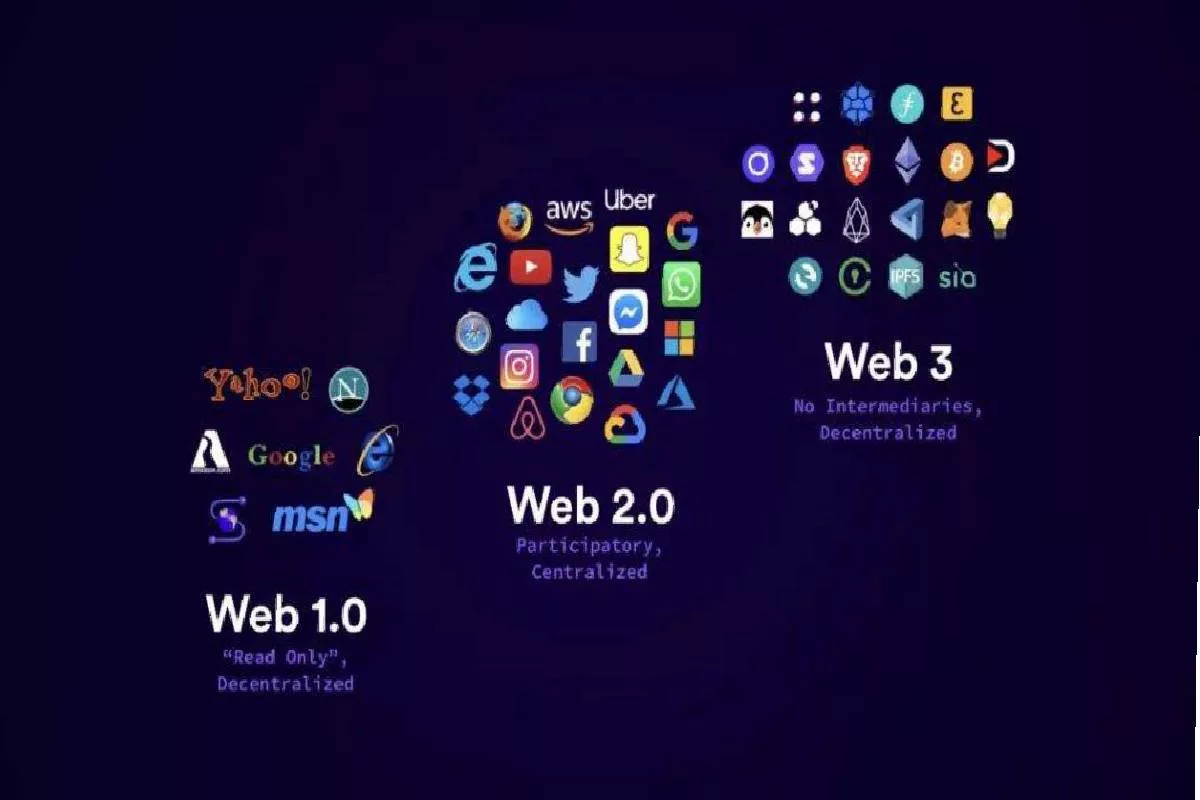Web3 Introduction
Web3 Introduction: The World Wide Web’s dependable, resilient infrastructure was made possible by centralization, which also assisted in bringing billions of people online.
At the same time, a small group of centralized organizations control a sizable portion of the World Wide Web and make unilateral decisions over what should and shouldn’t be permitted.
The solution to this problem is Web3. The Web3, which supports decentralization and is being produced, operated, and owned by its users, is not a Web that is monopolized by big tech companies. Web3 gives people the ability to make decisions rather than corporations. Let’s look at how we got here before we discuss Web3.
The Original Web
- The majority of people believe that the Web was created and has only been a part of modern life since that time.
- But the Web that most of us use today is very different from what was first intended.
- Breaking the brief history of the Web into two broad time periods—Web 1.0 and Web 2.0—will help you comprehend this better.
Read-Only Web 1.0 (1990-2004)
- Tim Berners-Lee was hard at work creating the protocols for the World Wide Web in 1989 at CERN in Geneva.
- His notion? to develop open, decentralized protocols that permitted the sharing of knowledge from any location on Earth.
- Around 1990 until 2004, Berners-invention, Lee’s now referred to as “Web 1.0,” underwent its initial development.
- Web 1.0, also known as the read-only web, was primarily made up of static websites that were controlled by businesses.
- There was almost no user involvement, and people hardly ever created content.
The Read-Write Web 2.0 (2004-now)
- Social media platforms’ introduction in 2004 marked the start of the Web 2.0 era.
- The web developed into a read-write medium rather than a read-only one.
- Instead of offering users material, businesses started to offer platforms where users could exchange user-generated content and communicate with one another.
- As more individuals went online, a small number of leading businesses started to hold a disproportionate percentage of the traffic and value produced on the internet.
- The business model based on advertising was also created by Web 2.0.
- Users may generate content, but they didn’t own it or get paid when it was made.
Read-Write-Own Web 3.0
- Gavin Wood, a co-founder of Ethereum, came up with the concept of “Web 3.0” immediately after Ethereum launched in 2014.
- Gavin articulated a solution to a concern shared by many early cryptocurrency adopters: the Web demanded too much trust.
- That is, the majority of the Web that people are familiar with and use today depends on their confidence in a select group of private firms to work in the public’s best interests.
Web3 Restrictions
Web3 has many advantages, but there are still several restrictions that the ecosystem needs to overcome if it is to grow.
Accessibility
- Important Web3 capabilities, such as Sign-in with Ethereum, are already freely used by anyone. However, many people still find the relative cost of transactions to be exorbitant.
- Due to high transaction costs, Web3 is less likely to be used in developing countries with lower levels of affluence.
- These issues are being resolved on Ethereum via layer 2 scaling techniques and network updates.
- The technology is prepared, but in order to make Web3 widely accessible, layer 2 adoption must increase.
User Encounter
- Web3 currently has a too-high technical entry hurdle. Users need to be able to navigate confusing user interfaces, comprehend security issues, and comprehend sophisticated technical documents.
- This is being addressed by wallet providers in particular, although further development is required before Web3 is widely embraced.
Education
- In contrast to Web2.0, Web3 presents new paradigms that call for acquiring new mental models.
- A similar push for education took place in the late 1990s as Web1.0 gained popularity; proponents of the internet employed a variety of instructional strategies to teach the public, ranging from straightforward metaphors (the information highway, browsers, and web surfing) to television broadcasts.
- Web3 is not challenging, but it is unique. Its success depends on educational programs that inform Web2 users of these Web3 principles.
Through our Translation Program, which aims to translate crucial Ethereum content into as many languages as we can, Ethereum.org supports Web3 education.
Infrastructure that is Centralized
- The Web3 environment is still developing and changing quickly. Because of this, it presently mostly relies on centralized infrastructure (GitHub, Twitter, Discord, etc.).
- Many Web3 businesses are scrambling to close these gaps, but creating dependable infrastructure takes time.
Also Read: How to Maintain Kidney Health?

